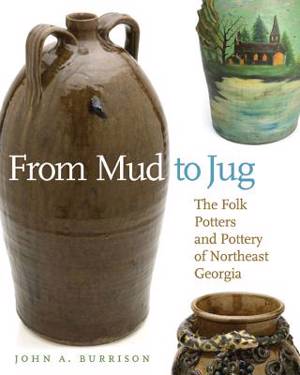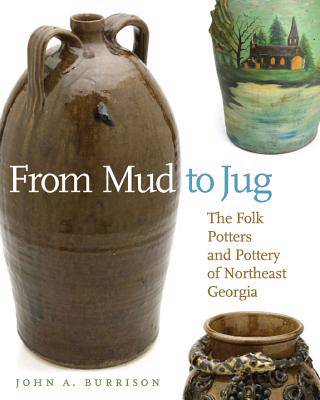
- Afhalen na 1 uur in een winkel met voorraad
- Gratis thuislevering in België vanaf € 30
- Ruim aanbod met 7 miljoen producten
- Afhalen na 1 uur in een winkel met voorraad
- Gratis thuislevering in België vanaf € 30
- Ruim aanbod met 7 miljoen producten
Zoeken
€ 48,45
+ 96 punten
Omschrijving
John Michael Vlach called Brothers in Clay "not only the best study of American stoneware pottery now available but also a fine model for the presentation and analysis of hand-based technologies." The anthropologist Claude Levi-Strauss noted, "Mr. Burrison has brought to this undertaking a sensitivity, a finesse, and a flair for description and analysis that entitle the book to a place among the classics of this type."From Mud to Jug--both a companion and sequel to Brothers in Clay--deepens and enriches Burrison's earlier study by focusing on the northeast corner of Georgia, which has maintained a continuous tradition of pottery making since the early nineteenth century. Through interviews, a census of active potters trained at the centers of Cleveland (White County) and Gillsville (Hall County), and more than one hundred color photographs of pots, potters, and their work spaces, Burrison captures the living tradition of one of the last areas of the United States where Euro-American folk pottery is still being made. The book also explores the roots and historical development of north Georgia's stoneware tradition and includes rare historic photos that have not been previously published. The Folk Pottery Museum of Northeast Georgia, which opened in 2006 at Sautee Nacoochee Center in White County, is also acknowledged and described.
Specificaties
Betrokkenen
- Auteur(s):
- Uitgeverij:
Inhoud
- Aantal bladzijden:
- 180
- Taal:
- Engels
- Reeks:
Eigenschappen
- Productcode (EAN):
- 9780820333250
- Verschijningsdatum:
- 15/03/2010
- Uitvoering:
- Paperback
- Formaat:
- Trade paperback (VS)
- Afmetingen:
- 203 mm x 251 mm
- Gewicht:
- 725 g

Alleen bij Standaard Boekhandel
+ 96 punten op je klantenkaart van Standaard Boekhandel
Beoordelingen
We publiceren alleen reviews die voldoen aan de voorwaarden voor reviews. Bekijk onze voorwaarden voor reviews.











